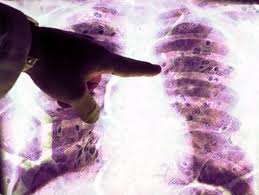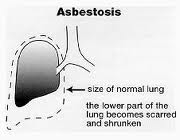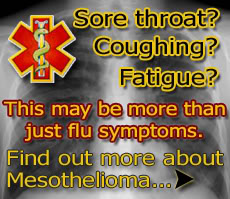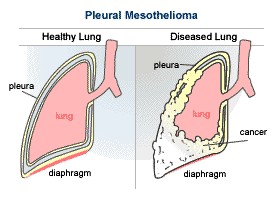According to a study by Turkish researchers, a second round of chemotherapy may not do much good for mesothelioma patients whose cancer returns after first-line treatment.
 Their findings are based on an analysis of 51 pleural mesothelioma patients from a Turkish hospital. All patients in the study were initially treated with chemotherapy, the standard first-line treatment for mesothelioma. But, when their mesothelioma tumors began to grow again several months later, some patients were treated with second-line chemotherapy (SLCT) while others had best supportive care (BSC), which includes symptom management only.
Their findings are based on an analysis of 51 pleural mesothelioma patients from a Turkish hospital. All patients in the study were initially treated with chemotherapy, the standard first-line treatment for mesothelioma. But, when their mesothelioma tumors began to grow again several months later, some patients were treated with second-line chemotherapy (SLCT) while others had best supportive care (BSC), which includes symptom management only.
Chemotherapy Standard Is Tough
While chemotherapy is a standard first-line treatment for mesothelioma, an aggressive cancer of the mesothelial membranes, there is disagreement within the medical community as to whether or not second-line chemotherapy is effective. While it can sometimes slow the progression of mesothelioma, chemotherapy is also hard on the body and causes a range of dangerous side effects. For this reason, only the healthiest patients are even considered candidates for second-line chemotherapy.
Chemotherapy Survival Rates
In the Turkish study, patients who had chemotherapy as both a first- and second-line treatment had a median overall survival of 20.3 months. These patients had a median survival of 5.9 months after the end of their first-line chemotherapy. Patients who had only BSC when their mesothelioma began to grow again had a median overall survival of 14.7 months. The median overall survival for these patients from the end of their first-line chemotherapy treatment was 4.7 months.
While the figures seem to show that the second-line chemotherapy patients had better outcomes than those receiving BSC, the authors of the study say the differences between the two are not statistically significant. In addition, the fact that second-line chemotherapy is usually reserved for select patients may also contribute to the apparent skew of the results. They conclude, Our results do not support the proposal that second-line chemotherapy could be effective in patients with malignant pleural mesothelioma.”
While such studies can help guide mesothelioma treatment planning, treatment decisions are made on a case-by-case basis, based on a range of criteria. The original study appears in the Asian Pacific Journal for Cancer Prevention. (Mutlu, H, et al,
Secondline chemotherapy versus best supportive care in patients with malignant pleural mesothelioma: a retrospective study
2013
Asian Pacific Journal of Cancer Prevention
pp. 3887-3889
http://www.apocpcontrol.org/page/apjcp_issues_view.php?no=4654&gubun=p&s_search=mesothelioma&s_paper_vol=14&s_number33=6














